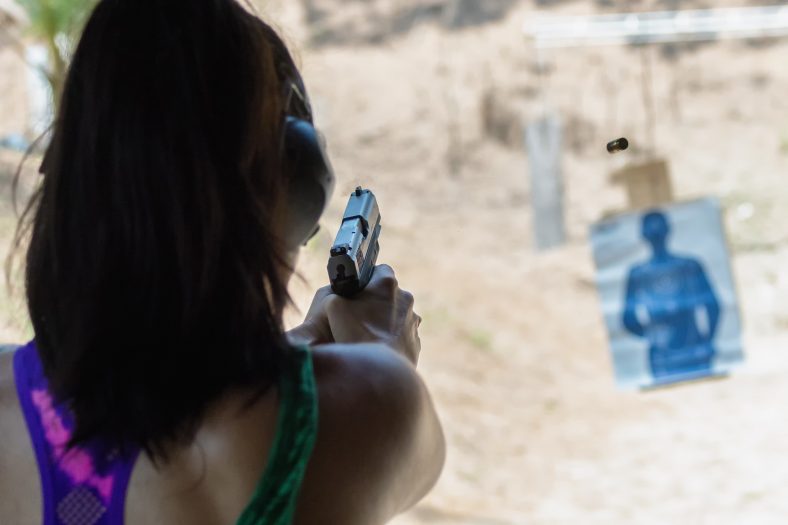Buying a gun can be an overwhelming experience, especially if you’re new to the world of firearms. With so many different types and sizes of guns available, choosing one can seem like a daunting task. But it doesn’t have to be! Here are some helpful tips for women who are looking to buy their first gun.
Know Your Purpose
Before heading out to buy your gun, take some time to think about why you need one in the first place. Are you looking for something for home defense? Do you want something for target shooting or competition? Knowing what type of gun will best suit your purpose is key—it will help narrow down your options and make shopping much easier.
Research Different Types of Guns
Now that you know what type of firearm will fulfill your needs start researching different models and brands available on the market today. Look into reviews from other women who have purchased similar guns; this will give you insight into which guns are reliable and well-constructed while saving money in the long run on repairs or upgrades that may not be necessary with another model. Consider how comfortable each gun is in terms of recoil and weight as well; many companies now offer firearms specifically designed with female shooters in mind that may fit better than traditional designs do.
Understand Different Types of Guns
Once you know what type of gun fits your purpose, it’s important to understand the different types available. Revolvers are simple handguns with rotating cylinder chambers that hold multiple rounds. Semi-automatic pistols, meanwhile, have detachable magazines that allow you to quickly reload them with fresh rounds while keeping the chamber loaded at all times. Shotguns and rifles come in various gauges and sizes as well—from small-bore shotguns used for sporting clays or hunting birds to large-caliber rifles ideal for long-range shooting or big game hunting. You will also have to take into account which ammunition it uses, and you may need to buy 9mm ammunition or 40 S&W ammunition depending on the gun.
Caliber Consideration
When selecting a caliber, it’s important to consider the power versus control ratio of the round you choose. Rounds with higher power will offer greater stopping power, while rounds with lower power will offer better control and accuracy due to less felt recoil. A good balance between both is ideal; however, each person is different and should choose based on their individual needs.
Think About Size & Weight
The size and weight of a gun can also play a role in determining which one is right for you. If you plan on carrying your gun around with you throughout the day, then a smaller pistol may be better suited than something bulkier, like a shotgun or rifle. However, if most of your shooting will be done from a stationary position—like at an indoor range—then size won’t be as much of an issue since recoil won’t be as much of a factor when shooting from a fixed position.
Recoil Management
Another factor to consider when selecting a firearm is your ability to manage recoil effectively. If you are new to handguns or are not comfortable with shooting them yet, then you may want to start with lower caliber rounds like .22LR or .380 ACP until you become more comfortable shooting larger calibers like 9mm or .45ACP. You should also consider accessories such as grips that help absorb some of the felt recoils from firing your handgun, as well as practice drills that can help build up your proficiency in managing recoil effectively over time.
Test It Out In Person
Once you have narrowed down your options based on research and size, it’s time to visit a local firearms shop or shooting range where you can get hands-on experience with different guns before making any final decisions. This will give you an opportunity to compare how each gun feels when held and fired so that you can determine which one is most comfortable and accurate for you personally. Don’t forget to always wear eye protection when testing out any firearms!
Think About Concealability
If you plan on carrying your firearm on your person then it is important to think about concealability when selecting one. Smaller guns are usually easier to conceal than larger ones, so if that is something that matters to you, then it should factor into your decision-making process. If concealability is not an issue, then size should still be taken into consideration because larger guns may be heavier and more difficult to handle than smaller ones.
Safety Features
Finally, safety features are an essential consideration when selecting any firearms. Look for guns with internal safeties as well as external ones such as trigger guards or manual safeties that allow you to lock your gun in an unloaded state until ready for use. Additionally, look for models with loaded chamber indicators which will tell you if there is a round in the chamber without having to open the action or physically inspect it yourself. These features provide invaluable protection against accidental discharges or negligent handling of firearms; always make sure that any gun you purchase has these features before making your final decision!
When it comes time to choose your first firearm, there’s no need to feel overwhelmed or intimidated by the process. By taking into account factors such as purpose, type of firearm, size/weight, and even budget considerations, selecting the right gun can become an enjoyable experience rather than an intimidating one! With these tips in mind, any woman should feel confident finding her perfect handgun or rifle!

